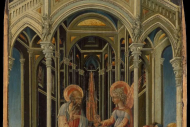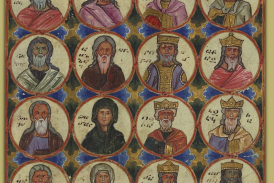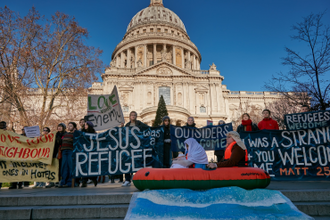Gospel in Art: Love your enemies and pray for those who persecute you

Nero's Torches, by Henryk Hektor Siemiradzki. Painted in 1878 © National Museum, Krakow
Source: Christian Art
Gospel of 18 June 2024
Matthew 5:43-48
Jesus said to his disciples: 'You have learnt how it was said: You must love your neighbour and hate your enemy. But I say this to you: love your enemies and pray for those who persecute you; in this way you will be sons of your Father in heaven, for he causes his sun to rise on bad men as well as good, and his rain to fall on honest and dishonest men alike. For if you love those who love you, what right have you to claim any credit? Even the tax collectors do as much, do they not? And if you save your greetings for your brothers, are you doing anything exceptional? Even the pagans do as much, do they not? You must therefore be perfect just as your heavenly Father is perfect.'
Reflection on the painting
The call of the gospel can be very challenging. Today's reading is arguably one of the most demanding passages in all of the gospels. Jesus calls on his disciples not only to love our neighbour, a command that is found in the Old Testament, but he also calls on them, and on us, to love our enemy, which goes beyond anything found in the Old Testament. Many of us might struggle to think of someone we would describe as our enemy. Yet, we might be able to recall people who have hurt us or caused us harm in some way. We are unlikely to have warm feelings toward such individuals. However, when Jesus calls on his disciples to love their enemy, he is not referring to warm feelings or emotions of any kind. Jesus is speaking about an act of will rather than feelings.
"Nero's Torches," also known as "Candlesticks of Christianity," is a painting created by the Polish artist Henryk Hektor Siemiradzki in 1876. It is a monumental dramatically depicting the horrors of the early Christian persecutions during the reign of Emperor Nero (AD 54-68). After the Great Fire of Rome in AD 64, Nero blamed the Christians for the disaster. He subjected them to horrific punishments, including being used as human torches to light his gardens. The painting captures in meticulous detail the chilling moment when Christians are tied to stakes and set on fire to illuminate a garden party for Nero and his guests. The scene is set in an opulent garden, emphasising the stark contrast between the cruelty of the act and the grandeur of the surroundings.
The painting elicits a strong emotional response, highlighting the innocence and suffering of the martyrs while condemning the barbarity of their persecutors. The juxtaposition of human cruelty against a backdrop of opulence and beauty makes for a very engaging painting. The painting serves as a poignant reminder of the early Christian martyrs' sacrifices... all Christians who put the call of today's Gospel reading into practise: to love their enemies and even in doing so, being submitted to the most cruel of deaths.
LINKS
Gospel in Art: https://christian.art/
Today's Reflection: https://christian.art/daily-gospel-reading/matthew-5-43-48-2024-2/


















